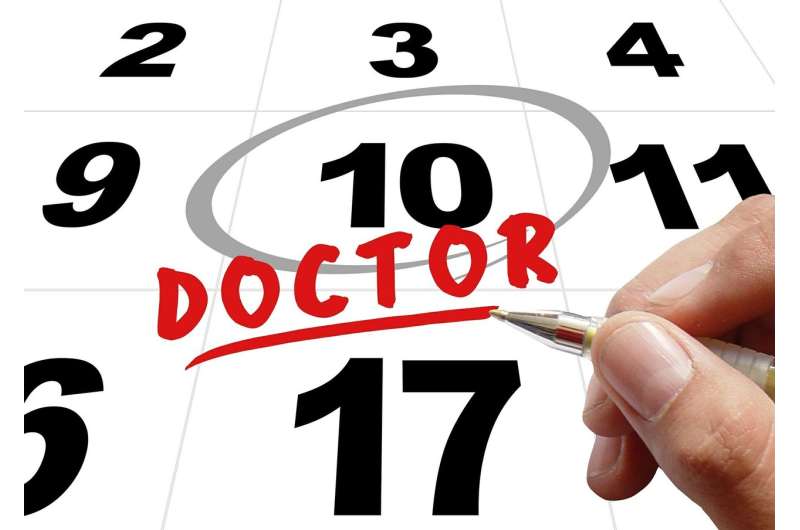Credit: CC0 Public Domain
New research suggests that a little finesse and a thoughtful approach could go a long way toward reducing a vexing problem in the health care system: missed appointments.
Researchers from Oregon Health & Science University and the VA Portland Health Care System conducted in-depth interviews with patients at the VA and came up with a series of six recommendations to reduce the number of times patients miss appointments.
The study is published in the Journal of General Internal Medicine.
"No-shows are a big deal because they are a really preventable source of inefficiency in the health care system," said lead author Alan Teo, M.D., M.S., associate professor of psychiatry in the OHSU School of Medicine and a researcher and psychiatrist at the VA. "Previous research suggests that patients who miss visits are at a higher risk of negative health outcomes, so this is an important population of patients to be thinking about and taking better care of."
From an economic standpoint, missed appointments set off a cascade of costs in the health care system, through the ripple effect created by patients, clinicians and medical assistants in rescheduling.
Previous research led by Teo indicated that directly connecting by telephone with an advance reminder reduces no-shows considerably. The new research expands on that finding through a series of systematic interviews conducted with 27 patients seen at the VA in Portland.
Based on that feedback, researchers developed six key recommendations for appointment reminders, underscored by illustrative quotes from patients:
- Mix it up. Varied content and format signal patients to examine reminders more closely. "When I see something different, I usually at least read it once. But if it's the same every time, I don't."
- Add a personal touch. Many patients would like communications to be more personable and for the appointment systems to be more human. "You're human, I'm human. Let's interact."
- Include clinic specifics. Reminders could be improved by including key location and contact information such as a map, the precise location of a clinic and a direct phone extension for the clinic.
- Keep it short and simple. Appointment reminders that are short, simple and direct are preferred. "In a letter, short sweet and to the point. I think less is more in that situation."
- Time reminders based on the mode of delivery. Appointment letters and postcards should be delivered about a week in advance, while text message reminders are best-suited to one or two days prior.
- Hand over reminder control to the patient. Patients have varied preferences and needs when it comes to appointment reminders. They would like to have a say in the types of reminders they receive, such as through a clear opt-out or opt-in system. "I wish I could opt out of the letter. Because I think it's a waste of paper, personally, for me. Paper, postage, for the government to spend, when I prefer electronic."
More information: Alan R. Teo et al, Enhancing Usability of Appointment Reminders: Qualitative Interviews of Patients Receiving Care in the Veterans Health Administration, Journal of General Internal Medicine (2020). DOI: 10.1007/s11606-020-06183-5
Journal information: Journal of General Internal Medicine
Provided by Oregon Health & Science University






















